Wildlife-friendly borders for your rural property protect animals from deadly barriers that claim one life every 2.5 miles annually. By choosing permeable fencing under 40 inches tall with 16-inch clearance underneath, you’ll maintain habitat connectivity while still marking your boundaries. Native plant hedgerows offer sustainable alternatives that support local biodiversity, prevent soil erosion, and require less maintenance than traditional fencing. Discover how these thoughtful boundary solutions can enhance both your property and the surrounding ecosystem.
Natural Barriers That Preserve Wildlife Migration Routes
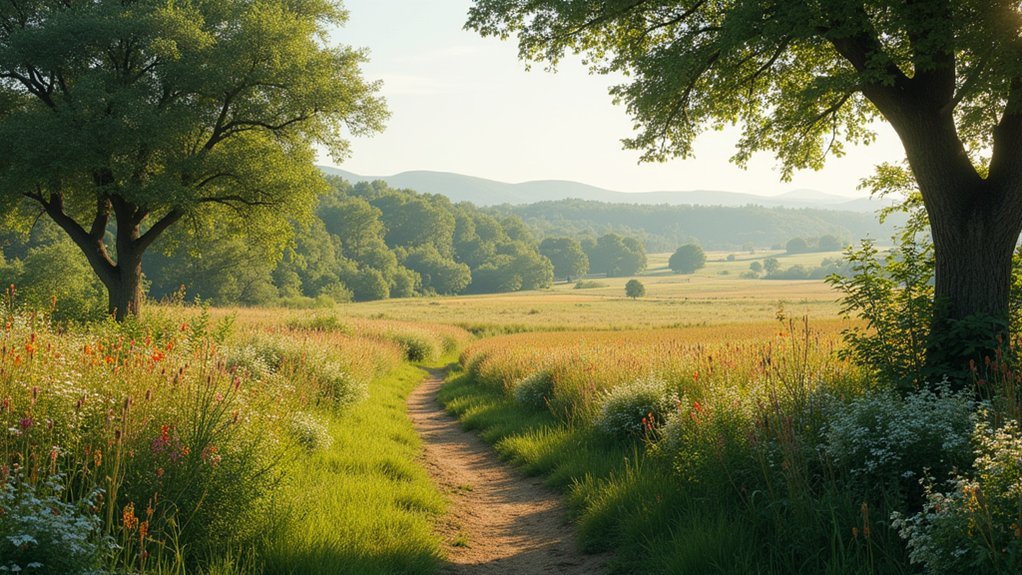
When you erect traditional fencing around your rural property, you’re inadvertently creating deadly obstacles for local wildlife, with research showing one animal death every 2.5 miles of fencing annually.
Young animals are particularly vulnerable to these barriers.
Instead, consider wildlife-friendly fencing or natural alternatives like hedgerows that maintain habitat connectivity while defining your boundaries.
These thoughtful designs allow wild animals to follow their natural migration routes and access essential resources unimpeded.
The most effective borders stand below 40 inches and use visible materials that prevent collisions.
By incorporating native plants into your property edges, you’ll support biodiversity while creating functional borders that wildlife can navigate safely.
Your choice to implement permeable boundaries contributes to habitat restoration efforts and creates a landscape where both humans and animals thrive together.
Eco-Friendly Materials for Creating Sustainable Property Boundaries
Numerous sustainable alternatives exist for rural homeowners seeking to define their property lines without harming the environment.
You’ll find recycled wood and non-toxic metal options that greatly reduce environmental impact while serving their practical purpose.
Consider bamboo or composite products for sustainable fencing that offers durability without contributing to deforestation.
These materials promote biodiversity by protecting local ecosystems rather than destroying them.
For garden borders, biodegradable materials prevent waste accumulation while enhancing soil health.
Natural stone and living plant barriers create wildlife-friendly habitats that blend seamlessly with your landscape while effectively marking boundaries.
Don’t overlook permeable fencing options that allow proper water infiltration, reducing stormwater runoff and maintaining soil health.
These eco-friendly choices guarantee your property boundaries work with nature, not against it.
Designing Permeable Borders That Allow Wildlife Movement
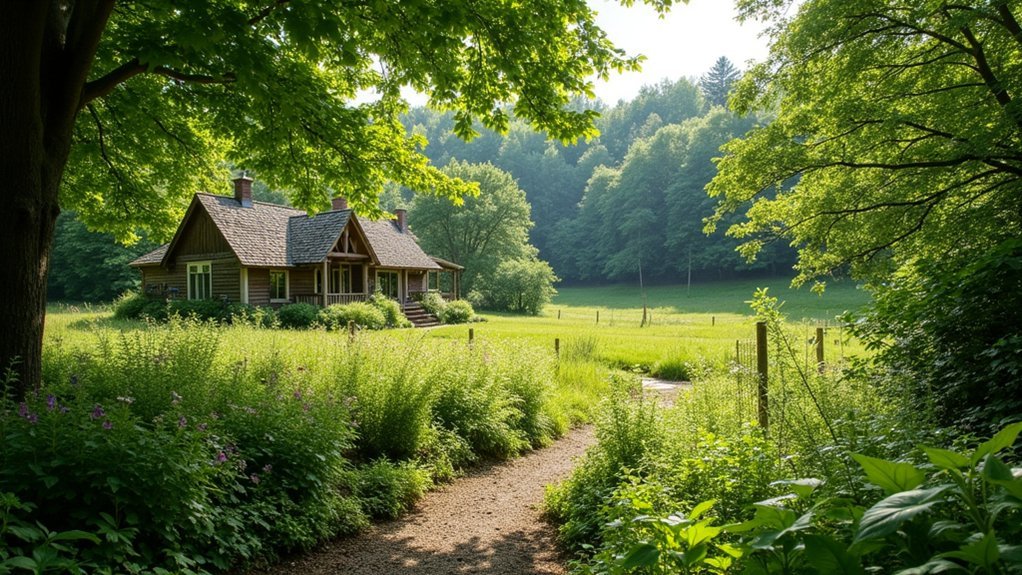
Creating wildlife-friendly borders requires thoughtful design that balances property delineation with ecological needs.
When designing permeable borders, keep fence height to 40-42 inches maximum, with at least 16 inches of clearance underneath for smaller species to pass through.
Incorporate vertical wire spacing of 16 inches to prevent wildlife entanglement while allowing movement. These specifications accommodate various species’ sizes and natural behaviors, ensuring they can access crucial resources across properties.
Your collaboration with neighbors and local wildlife agencies creates a cohesive network of permeable borders that supports regional biodiversity.
Benefits of Native Plantings as Living Fence Alternatives
Native plantings serve as superior alternatives to traditional fencing, providing boundaries while actively supporting local ecosystems.
Unlike conventional fences that block wildlife movement, living fences made of native species create corridors that allow wildlife species to move freely through your property, maintaining their natural migration patterns.
Native living fences foster wildlife mobility, preserving vital migration pathways across landscapes that would otherwise be disrupted.
You’ll benefit from reduced maintenance as many native plants are drought-resistant, contributing to water conservation while eliminating the need for chemical treatments.
Their extensive root systems prevent soil erosion and enhance soil health, creating a more stable landscape over time.
Perhaps most importantly, these plantings boost biodiversity by providing food and shelter for local pollinators and other beneficial creatures.
Your property becomes an active participant in the ecosystem rather than an obstacle to local wildlife.
Practical Considerations for Implementing Wildlife-Safe Boundaries

When designing boundaries for your rural property, you’ll need to balance security needs with ecological responsibility. Replace barbed wire with smooth bottom wires and consider wooden top rails that are highly visible to ungulates and birds, helping reduce the 70% mortality rate associated with fences over 40 inches high.
Install fences with vertical wire spacing of at least 16 inches to allow juvenile animals to escape if entangled. Position your boundaries away from water sources to maintain wildlife access to essential habitats.
Coordinating with neighbors creates continuous wildlife-friendly corridors that support migration patterns increasingly disrupted by climate change.
Check local regulations—some areas like Los Angeles County restrict fencing in sensitive zones. These thoughtful adjustments strengthen your connection with wildlife while maintaining effective property boundaries during increasingly unpredictable environmental conditions.
Frequently Asked Questions
Why Is a Wildlife Corridor Important to Wildlife?
Wildlife corridors are important because they help you protect biodiversity. They’ll allow animals to migrate safely, access resources, maintain genetic diversity, and adapt to environmental changes—all critical factors for their survival and population health.
Why Is It Important to Conserve Habitat for Wildlife?
Conserving wildlife habitat is essential because you’re protecting biodiversity and migration routes that animals need to survive. Without it, you’ll see increased species decline and disruption of ecosystem services that benefit your community.
What Are Some Ways That You Can Help Restore Habitats in Your Own Backyard or Neighborhood?
You can help restore habitats by planting native species, creating brush piles, installing bird feeders and bat houses, adding water sources, and reducing pesticide use in your backyard or neighborhood.
How to Make Your Yard Animal Friendly?
You’ll attract more wildlife by planting native vegetation, creating water sources, building brush piles, reducing pesticide use, and installing bird feeders and bat houses. These simple steps make your yard a welcoming habitat for diverse animals.
In Summary
Your choice to create wildlife-friendly borders around your rural home isn’t just environmentally responsible—it’s practical too. By using permeable boundaries, natural materials, and native plantings, you’re preserving essential migration routes while enhancing your property’s beauty. You’ll enjoy increased biodiversity, reduced maintenance costs, and a deeper connection to the surrounding ecosystem. It’s a simple change that benefits both wildlife and your quality of rural living.
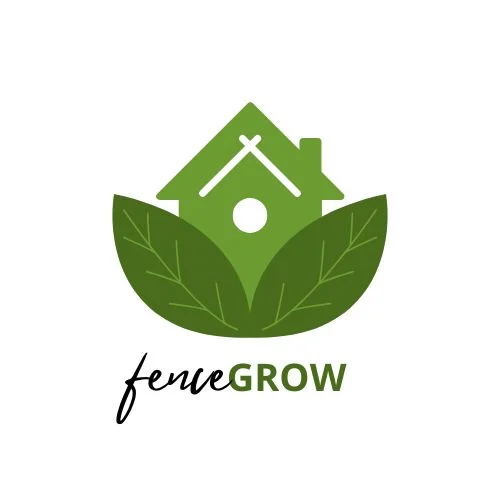
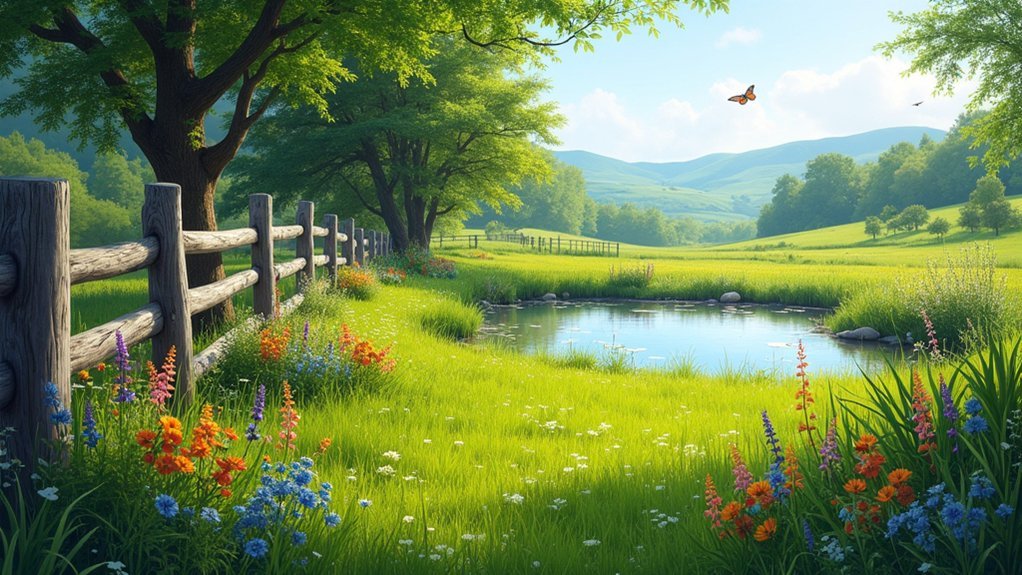

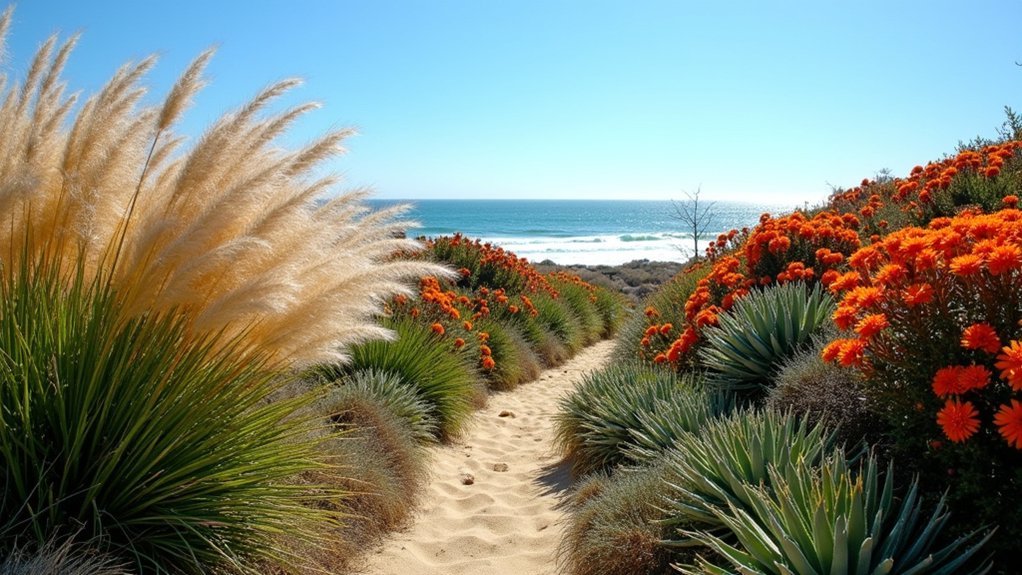
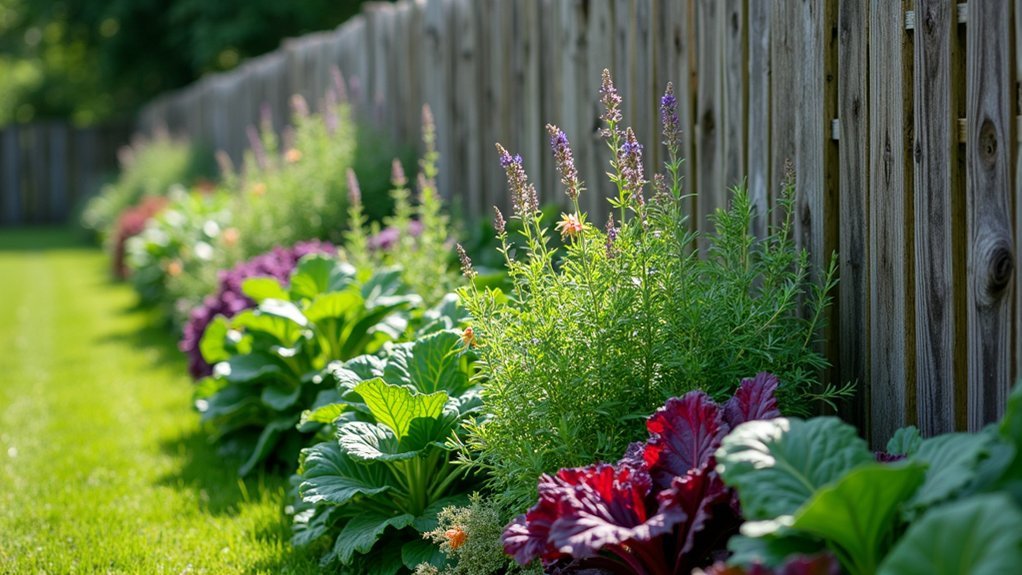
Leave a Reply